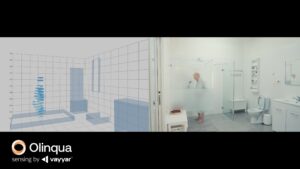Australia’s health industry has a long history of using innovative technologies to improve health care delivery.
In 1929, the invention of an affordable pedal-powered radio gave people in isolated areas access to advice and emergency medical services.
92 years later, Australia’s health care systems continue to show its commitment to innovation to solve some of the biggest health issues of our time – an ageing population, changing disease profiles, an understaffed qualified workforce and increasing, new health priorities.
Healthcare technology innovation is also being implemented to hone and improve patient experiences and care.
All of which contribute to the rise of Smart Hospitals, where infrastructure, people, clinical processes and administrative workflows are brought together to gather and analyse data that can help improve staff and patient care and safety.
Real Time Health Systems: powering Smart Hospitals
Your spine – or backbone – is your body’s central support structure, helping you to sit, stand, walk, twist and bend effectively. It’s the foundation for all the movements across your body!
A Real Time Health System (RHTS) is a foundational piece of technology that acts as the backbone of a Smart Hospital. By collecting relevant information from different sources – devices, applications, e-records – into a central view, teams within a hospital can make informed decisions, fast!
Advances and adoption of sensor technology, location tracking, AI and Internet of Things makes it possible to get collected data to the right person, at the right time.
Let’s see how Real Time Health Systems work in a more autonomous manner to improve the quality of patient care, costs, and patient satisfaction levels.
Facilities of the future
Busy teams require up-to-date information to stay on top of facility performance. Because after all, a highly functional facility is critical to enabling staff to operate at the top of their game.
A faulty fridge compressor might sound relatively harmless – but if that fridge contains expensive, volatile medicine that requires a specific temperature to remain usable, it could spell disaster. Lack of medication, restocking issues and of course the dollars lost are all issues that hospitals need to ensure they can avoid – which is where the right technology comes in.
Facility monitoring and alarming solutions can be set to notify floor staff and/or engineering teams to ensure efficient and effective building management.
What does it look like in a hospital?
- In-situ probes and AI technology can identify risk trends in fridge temperature and performance and can simultaneously initiate tasks to engineering to rectify the root problem while also sending urgent notifications to nursing staff to relocate contents prior to them being compromised.
- A real time health integrated system can detect malfunctions for lifts, doors, and room temperatures prior to emergency protocols being manually engaged. A code yellow engineering emergency can then be raised, alerting the hospital incident command team faster.
By equipping hospitals with the right equipment, ability to maintain the right stock levels and the right facility conditions, a hospital can be guaranteed to be empowered to properly perform its duty of care to patients.
The intelligence edge
Effective asset management systems need to go beyond the simple identification and categorisation.
Location intelligence combined with real-time tracking, is essential for enabling staff to locate critical assets and manage inventory levels, for optimal asset management.
Imagine the effectiveness of a team empowered to stay organised and on top of regularly used equipment with the ability to identify details such as:
- How close an asset is
- Where it’s proper storage location is
- Map based location views
It might sound futuristic but with the right technology – location intelligence and real time sensors – it’s not just possible but live and functional in the many hospitals that Olinqua serves on a daily basis.
Olinqua’s smart inventory management systems can even be set to alert teams to low stock levels of exhausted assets or of assets due to expire shortly.
We can even go one step further, tying alerts to statistically high or low usage periods based on peak months/seasons for medications (e.g. flu season).
Digitally enabled hospitals
The best hospitals know that there’s no substitute for great staff – but there’s always room to enable greater patient outcomes, efficiency and effectiveness when layering intelligent systems and technology over the great work that hospital workers do.
With Real Time Health Systems, a hospital ecosystem can experience a momentous shift. From management becoming more real-time, data-driven, contextual, and service-oriented, to workflows becoming more coordinated and collaborative, event-driven and optimised.
For more information on how to turn or enhance hospitals to be smarter through innovations in digital health, please get in touch with our team members for a demo or a chat on all things Real Time Health Systems.



